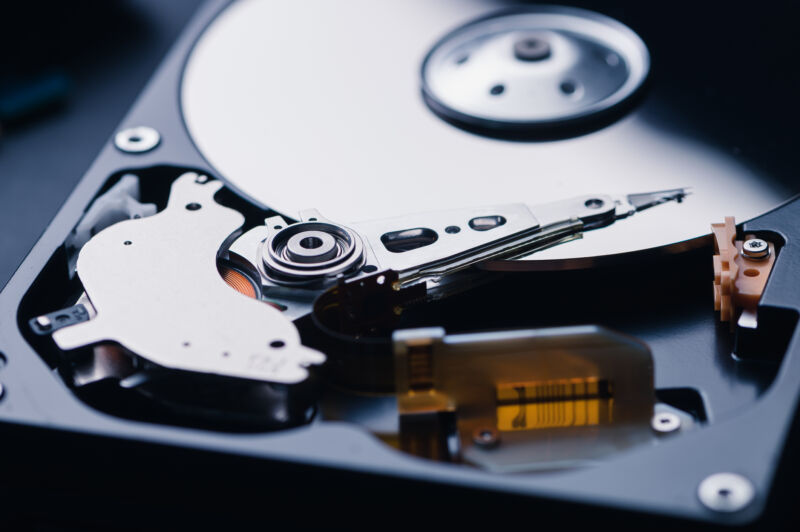
reader comments
109 with 0 posters participating
SSDs have usurped hard disk drives (HDDs) when it comes to performance, but whether building a network-attached storage (NAS) or having high-capacity needs on a budget, plenty of people still rely on spinning platters. Older drives that have seen a lot of use, however, may not be as reliable as before. Data Backblaze shared this week highlights how a hard drive’s annualized failure rate (AFR) can increase with age.
Since 2013, Backblaze, a backup and cloud storage company, has published an annual report analyzing the AFRs of hard drives in its data center. The 2022 report shared on Tuesday examines 230,921 hard drives across 29 models from HGST, Seagate, Toshiba, and WDC, with capacities ranging from 4–16TB. All models included at least 60 drives that were not previously used for testing.
Keep in mind that the sample group only consists of drives that Backblaze had on hand, and they are of varying ages, with some used for more days than others. However, Backblaze’s report does give us a unique look into the results of long-term hard drive use.
In case you needed a reminder of the morbid nature of time, Backblaze’s report shows evidence of hard drives’ AFR increasing with age. That’s not surprising news, but Backblaze is providing the data to paint a picture of what that looks like.
Backblaze’s analysis of its findings said that the graph below “shows that the older drives, when grouped by size, fail more often.”

The oldest (average age of 92.5 months) hard drive Backblaze tested was a 6TB Seagate (ST6000DX000). Its AFR was 0.11 percent in 2021 and 0.68 percent in 2022. Backblaze said this was “a very respectable number any time, but especially after nearly eight years.”
Seagate, followed by Toshiba, topped Backblaze’s chart grouping AFRs by vendor, but most of the Seagate drives are much older than the rest of the drives tested.
“In general, Seagate drives are less expensive and their failure rates are typically higher in our environment,” Backblaze said. “But, their failure rates are typically not high enough to make them less cost-effective over their lifetime. You could make a good case that for us, many Seagate drive models are just as cost-effective as more expensive drives.”
Editor’s note: This article previously described AFR as “average failure rate,” instead of “annualized failure rate.” It’s been corrected.






